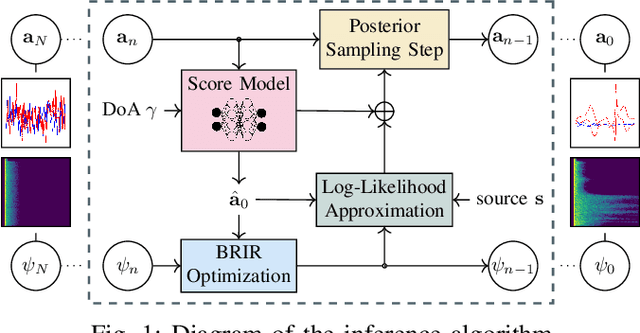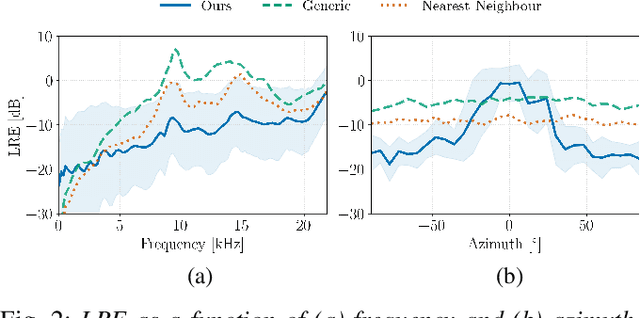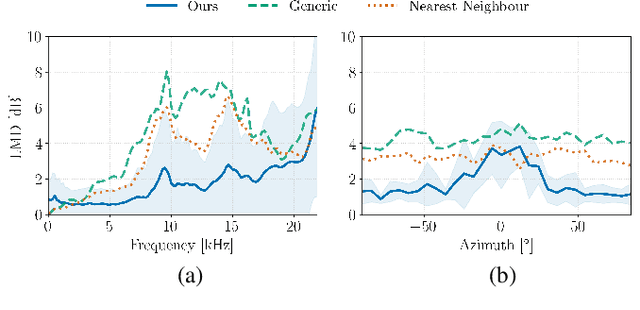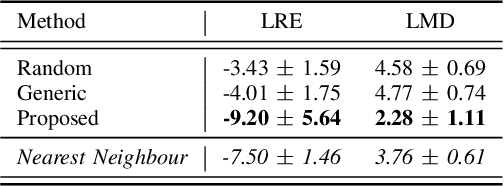HRTF Estimation using a Score-based Prior
Paper and Code
Oct 02, 2024



We present a head-related transfer function (HRTF) estimation method which relies on a data-driven prior given by a score-based diffusion model. The HRTF is estimated in reverberant environments using natural excitation signals, e.g. human speech. The impulse response of the room is estimated along with the HRTF by optimizing a parametric model of reverberation based on the statistical behaviour of room acoustics. The posterior distribution of HRTF given the reverberant measurement and excitation signal is modelled using the score-based HRTF prior and a log-likelihood approximation. We show that the resulting method outperforms several baselines, including an oracle recommender system that assigns the optimal HRTF in our training set based on the smallest distance to the true HRTF at the given direction of arrival. In particular, we show that the diffusion prior can account for the large variability of high-frequency content in HRTFs.
 Add to Chrome
Add to Chrome Add to Firefox
Add to Firefox Add to Edge
Add to Edge